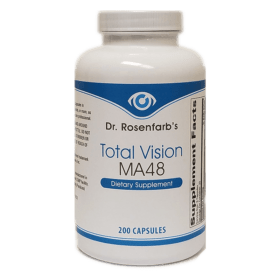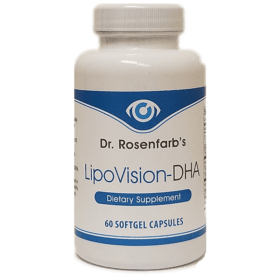Are you or someone you know experiencing symptoms of posterior vitreous detachment (PVD)? This common condition, which affects the eye’s vitreous gel, can cause floaters, flashes, and other visual disturbances. While traditional treatments focus on surgical intervention, there is a growing interest in exploring the healing power of nature to address PVD symptoms.
In this article, we delve into the world of natural treatments for posterior vitreous detachment and their effectiveness in providing relief. From dietary changes and supplements to herbal remedies and acupuncture, we uncover the potential benefits of embracing nature’s healing properties.
Let’s explore natural treatments for Posterior Vitreous Detachment. Whether you’re seeking a complementary approach or simply curious about the healing power of nature, this article is your guide to effective natural treatments for PVD.
What Is Posterior Vitreous Detachment
Posterior vitreous detachment (PVD) is a condition that occurs when the vitreous gel inside the eye separates from the retina, the light-sensitive tissue at the back of the eye. This separation can cause floaters, which are tiny specks or cobweb-like structures that appear to float across your field of vision. Flashes of light, a sudden increase in floaters, and a shadow or curtain-like effect in your peripheral vision are also common symptoms of PVD.
PVD is a natural part of the aging process and becomes more common as we get older. The vitreous gel, which fills the space between the lens and the retina, undergoes changes over time, becoming more liquid and less gel-like. As a result, it can begin to pull away from the retina, leading to posterior vitreous detachment. While PVD is generally harmless and does not require treatment, it can cause significant discomfort and affect your quality of life.
Common Symptoms of Posterior Vitreous Detachment
Recognizing the symptoms of posterior vitreous detachment is crucial for understanding when to seek medical attention or explore natural treatment options. The most common symptoms of PVD include floaters, flashes of light, and a decrease in visual acuity. Floaters are small specks or cobweb-like structures that seem to float across your visual field, while flashes of light appear as brief, bright streaks that may occur in one or both eyes. These symptoms can be alarming, but they are often harmless and tend to subside over time.
It’s important to note that sudden, dramatic changes in floaters and flashes of light, accompanied by a shadow or curtain-like effect in your peripheral vision, may indicate a retinal tear or detachment. In such cases, immediate medical attention is crucial to prevent further complications. If you experience these symptoms, it is essential to consult with an eye care professional as soon as possible.
Posterior Vitreous Detachment Causes
While posterior vitreous detachment is a natural part of the aging process, several factors can increase the likelihood of its occurrence. Age is the most significant risk factor, as PVD becomes more common as you get older. Other risk factors include nearsightedness (myopia) and a history of eye trauma or surgery. Additionally, certain medical conditions, such as diabetes and inflammation in the eye, can increase the risk of developing PVD.
The exact cause of posterior vitreous detachment is not fully understood, but it is believed to be primarily due to age-related changes in the vitreous gel. As the gel becomes more liquid and less gel-like, it can pull away from the retina, leading to PVD. While the process itself is natural, the symptoms associated with PVD can be bothersome and impact your daily life. This is where natural treatments come into play, offering potential relief and support for managing PVD symptoms.
Natural Treatments for Posterior Vitreous Detachment
When it comes to natural treatments for posterior vitreous detachment, several options may help alleviate symptoms and support overall eye health. These treatments focus on promoting a healthy balance within the eye and reducing inflammation, which can contribute to floaters and flashes. While natural treatments are not a substitute for medical advice, they can be used as complementary approaches to traditional treatments or as preventive measures.
Acupuncture for Posterior Vitreous Detachment
Acupuncture offers a holistic approach to addressing posterior vitreous detachment (PVD) symptoms, such as floaters and flashes of light. By strategically inserting tiny needles into specific points along the body’s meridians, acupuncture aims to restore balance and promote overall eye health. This natural approach can enhance blood circulation and alleviate symptoms, providing a supportive therapy for managing PVD.
Herbs for Posterior Vitreous Detachment
Certain herbs have been used in traditional medicine to support eye health and reduce symptoms associated with PVD. Your practitioner will prescribe the ones that fit best with your specific needs, ensuring that they complement your overall treatment plan and do not interact with any medications you may be taking.
Shop our Best-Selling Nutritional Supplements for Posterior Vitreous Detachment
-
 Total Vision MA48$55.00
Total Vision MA48$55.00 -
 CannaVision Oil 2500mg$99.00
CannaVision Oil 2500mg$99.00 -
 LipoVision-DHA$30.00
LipoVision-DHA$30.00 -
 CannaVision Oil 5000MG$149.00
CannaVision Oil 5000MG$149.00 -
 MSM Drops$22.00
MSM Drops$22.00
Diet and Lifestyle for Posterior Vitreous Detachment
In addition to specific supplements and herbal remedies, adopting a healthy diet and lifestyle can play a significant role in managing PVD symptoms. A diet rich in fruits, vegetables, whole grains, and lean proteins provides essential nutrients for eye health. Foods high in antioxidants, such as dark leafy greens, berries, and citrus fruits, can help protect the retina and reduce inflammation.
Maintaining a healthy weight, exercising regularly, and managing stress levels can also contribute to overall eye health and potentially alleviate PVD symptoms. Avoiding smoking and limiting alcohol consumption are additional lifestyle factors that can have a positive impact on eye health.
Posterior Vitreous Detachment Prevention
While it may not be possible to prevent posterior vitreous detachment altogether, certain lifestyle changes and precautions can potentially reduce the risk or delay its onset. Regular eye examinations, especially as you age, can help detect any changes in your eye health and address them promptly. Managing underlying medical conditions, such as diabetes or high blood pressure, is also crucial for maintaining overall eye health.
Protecting your eyes from trauma and injury is essential, so wearing safety goggles when engaging in activities that pose a risk is recommended. Additionally, it’s important to maintain a healthy lifestyle by eating a balanced diet, exercising regularly, and avoiding smoking.
Conclusion
In conclusion, while traditional treatments for posterior vitreous detachment primarily involve surgical intervention, holistic treatments can offer potential relief and support for managing symptoms. From acupuncture and herbs to nutritional supplements and lifestyle changes, embracing nature’s healing properties can provide alternative approaches to PVD symptom management.



